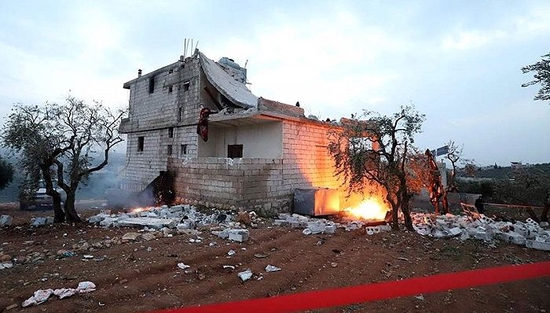A spokesman for the extremist organization ISIS confirmed on November 30 that Abu al-Hassan al-Hashimi al-Qurayshi, the top leader of the organization, was killed in the recent fighting.
This is also the second highest ISIS leader to die in the battle this year. In 2019, ISIS founder Baghdadi was killed in a U.S. military raid.
Although the top leader died one after another, ISIS did not stop. The organization is trying to make a comeback in Syria and Iraq and make Africa the focus of future development.
According to the Associated Press, ISIS released a sound on Wednesday confirming the death of the organization’s top leader, but did not disclose other details.
An ISIS spokesman also announced that Abu al-Hussein al-Husseini al-Qurayshi succeeded the top leader of the organization and urged supporters to be loyal to him.
After Baghdadi’s death, the two top leaders succeeded by ISIS used pseudonyms. The “Kureshi” in the names of the two is the name of the tribe where the Islamic prophet Muhammad is located.
The U.S. Central Command issued a statement on Wednesday saying that Abu Hassan Qureshi had been killed in mid-October, when the Syrian rebel “Free Syrian Army” launched a military operation against ISIS in Daraa Province in southern Syria.
The U.S. Central Command did not disclose whether the U.S. military was involved in the relevant operations, but only warned that ISIS still posed a threat to Syria and that the U.S. military and its allies would continue to attack the organization.
The British-based Syrian Observatory for Human Rights reported in mid-October that Syrian rebels killed a group of ISIS soldiers, including a commander, in the village of Jassem in Daraa governorate. During the exchange of fire between the two sides, an ISIS member detonated a suicide bombing belt.
Abu Hassan Qureshi, the highest leader of ISIS who died this time, has always kept a low profile and little is known to the outside world. In February this year, the U.S. military killed Abu Ibrahim al-Qurashi, the former leader of ISIS and successor to Baghdadi, in an assault in Syria.
After Baghdadi’s death, the two top leaders successively succeeded by ISIS did not have a influence similar to Baghdadi. But this did not stop the pace of ISIS reorganization.
According to the tracking of the International Crisis Organization, the ISIS leader mainly provides general direction guidance to the organization by publishing online information, and rarely participates in daily command work.
The organization currently operates mainly in two ways: the core members launch key attacks according to the instructions of the top leader; and smaller and more frequent attacks by branches scattered around the world.
Although major strongholds were lost in the war against ISIS, ISIS is being reorganized in Syria and Iraq. The organization is currently active and training new members in four regions of Syria, while launching frequent attacks in Iraq and Afghanistan.
In addition to trying to make a comeback in Syria, ISIS has also expanded its influence in Africa and Southeast Asia, among which Africa has been identified as a key development direction.
More than half of the branches currently called “province” by ISIS are located in Africa, including Sinai Province, Central Africa Province and Somalia Province. Just two weeks ago, ISIS “Sinay Province” exchanged fire with Egyptian government forces, killing seven Egyptian soldiers in the battle.
In June this year, ISIS launched a publicity campaign, publishing articles and videos calling on supporters to go to Africa to build Africa as a new stronghold of the organization.
A month after the publicity campaign, ISIS “West Africa Province” raided Kujie prison in Abuja, the capital of Nigeria, releasing nearly 900 prisoners, including ISIS members. In mid-November, ISIS launched attacks in Nigeria, Mozambique, the Democratic Republic of the Congo and Mali.



